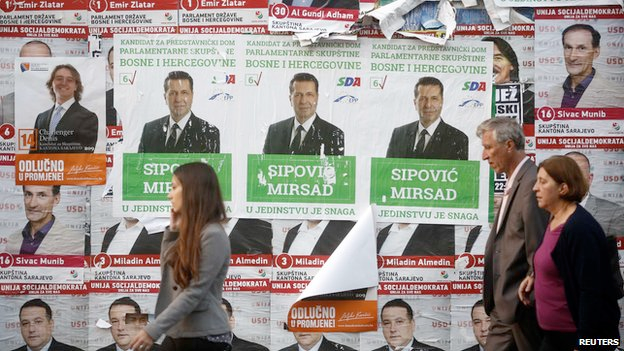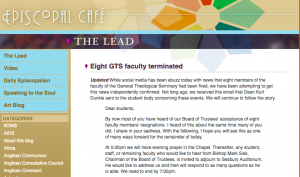 If we wish to date the beginning of the end of the institutional church, a good argument could be made for Ghent, 1324, when, according to David Landes, “the abbot of St Pierre authorized the fullers ‘to install a bell in the workhouse newly founded by them near the Hoipoorte’” (D Landes 73). Originally installed to infallibly signal times of prayer, the workhouse clock, like all clocks in the fourteenth century would eventually serve double duty. For it would also allow savvy entrepreneurs to signal the beginning and the end of the work day and thereby infallibly measure the abstract time and, so, the abstract values, of the goods produced between these signals. For the entrepreneurs, the church bells were, quite literally, a godsend, since eventually they would relieve them of the nasty business of having to negotiate just wages, prices, and holidays with representatives of clergy, the guilds, and the nobility.
If we wish to date the beginning of the end of the institutional church, a good argument could be made for Ghent, 1324, when, according to David Landes, “the abbot of St Pierre authorized the fullers ‘to install a bell in the workhouse newly founded by them near the Hoipoorte’” (D Landes 73). Originally installed to infallibly signal times of prayer, the workhouse clock, like all clocks in the fourteenth century would eventually serve double duty. For it would also allow savvy entrepreneurs to signal the beginning and the end of the work day and thereby infallibly measure the abstract time and, so, the abstract values, of the goods produced between these signals. For the entrepreneurs, the church bells were, quite literally, a godsend, since eventually they would relieve them of the nasty business of having to negotiate just wages, prices, and holidays with representatives of clergy, the guilds, and the nobility.
Herewith, too, nominalism, always a minority view among educated clergy, gained a fresh lease on life. For now practically it became increasingly difficult to mistake the material composition of things or people with their true, unseen, immaterial value or meaning. When, by the end of the fifteenth century, renegade priests were beginning to isolate faith from works, spirit from body, body from bread, blood from wine, and gospel from law, these nominalist distinctions suddenly found a ready audience among towns folk who, practically, already knew that this was the case. For the bells had already told them. (Note that M Luther’s distinctions would have made little sense to the diaspora-trained Jew Saint Paul by whom Luther believed his doctrinal reformation was originally coined.)
We can well imagine how the Holy Eucharist, not unlike the liturgical and visual ornamentation that Jean Calvin found so obnoxious, must have struck sixteenth century protestants with much the same embarrassment as the institutional church strikes twenty-first century Christians today: so fallible, so fraught, impure, defiled, and ugly. And perhaps we can understand then why these first Protestants fixed their gaze not only on the Word — which, after all, could still be confused with the Living Word, Christ Jesus, or His Body, which is to say, the Church — but on the words, the actual grammar and syntax, whose beauty lay in our capacity to isolate the written, material, script from its immaterial, transcendent meaning.
Over time this original embarrassment and discomfort has only grown. To be sure, in the heady Fordist days immediately following World War II, high modernism was permitted to prevail, at least until the economic downturn in the early 1970s. And perhaps we were led to believe that the spirit and the flesh might actually have truck with one another: big bloated institutions, expanding seminaries, new hires, expanding enrollments. And, yet, as David Harvey would remind us, for all of its expansionary bravado, the Fordist Church celebrated the ephemera of the spirit — sleek, crisp, empty architectural lines, Expressionist and post-Expressionist Christs, and a move liturgically away from fixed and frozen traditions — no less and perhaps even more than we are accustomed to today. Yet, as the saying goes, “I have been docetic with money and without money. And I prefer being docetic with money.” So that, when the downturn did hit in the 1970s and our institutions began to shed their bodies — liturgies, buildings, seminaries, students, hours, and, yes, their faculties (see #GTS8)— this pragmatic, neoliberal elimination of the Body of Christ could be framed as simply another step towards a higher, purer, truer form of Christianity.
Commuter priests, commuter parishioners, on-line liturgies, digital courses, digital faculties, electronic students, electronic libraries — what could be more spiritual, right?
To be sure, it would be equally, perhaps even more erroneous for us to flee to some kind of post-Modern Ebionitism. Bodies and spirits belong together. Institutions and histories are empty if not occupied by embodied practitioners walking in the Spirit. Liturgies must change as the Body is transformed. So too must architecture and aesthetics.
And, yet, it strikes me that we unnecessarily lacerate ourselves when with too broad brushstrokes we condemn the institutional church, the embodied church — with its all too evident limitations, missteps, weaknesses, and wounds — as such. Only when it forgets what it is, that it is flesh, does the institutional church overstep its bounds. That is to say, only when it comically masquerades as disembodied spirit — as the Spirit — does the institutional church deserve our rebuke. Seminaries without seminarians, without seminaries, without professors, without books, without chapels, without time for prayer and worship — all on-line, available with the click of a mouse. Now, that is comical! But it is also terribly tragic, precisely because it mistakes a regrettable vice for an unmitigated virtue: no body, no harm, spirituality by default.
Our institutions of higher learning need to recover their financial bearings. We need administrators who will tirelessly hit the road, bang on doors, shake the money tree, and make our seminaries work. We do not need administrators who roll over and celebrate their defeat as though it were a virtue. In short, we need the institutional church. We need bodies, buildings, chapels, libraries, professors, students, liturgies, histories, choirs, robes, and vestments. These are not immaterial to our faith for the simple reason that our faith is not immaterial. We need the institutional church. But we need an institutional church that fully recognizes its bodily character.
Amen veni Domine Iesu.
 Yesterday citizens across Bosnia and Herzegovina went to the polls to elect regional and national representatives (see
Yesterday citizens across Bosnia and Herzegovina went to the polls to elect regional and national representatives (see 
 Yesterday two energetic, well-dressed teens showed up my door campaigning against Measure D. Measure D is a local initiative, duplicated across the US, motivated by health care officials and parents worried by sky-rocketing diabetes among youth, and city officials concerned about the sky-rocketing costs of providing health care to citizens with diabetes. The Measure aims to increase the marginal costs stores have to pay on “oversized” high-fructose beverages under the sound economic theory that at a certain cost customers will prefer smaller and therefore lower fructose beverages, especially if those beverages per volume are less expensive than their super sized neighbors. The revenues generated by the added tax on oversized beverages will be placed in the general fund to be allocated according to the concerns of Berkeley’s elected city council members.
Yesterday two energetic, well-dressed teens showed up my door campaigning against Measure D. Measure D is a local initiative, duplicated across the US, motivated by health care officials and parents worried by sky-rocketing diabetes among youth, and city officials concerned about the sky-rocketing costs of providing health care to citizens with diabetes. The Measure aims to increase the marginal costs stores have to pay on “oversized” high-fructose beverages under the sound economic theory that at a certain cost customers will prefer smaller and therefore lower fructose beverages, especially if those beverages per volume are less expensive than their super sized neighbors. The revenues generated by the added tax on oversized beverages will be placed in the general fund to be allocated according to the concerns of Berkeley’s elected city council members. Wage inequality in the United States is at an all-time high. According to a frequently cited Congressional Budget Office Study, between 1979 and 2007, the top 1% of wage earners increased their income by about 275%. And in 2012, while incomes of the wealthiest 1% rose 20%, those of the remaining 99% rose only 1%.
Wage inequality in the United States is at an all-time high. According to a frequently cited Congressional Budget Office Study, between 1979 and 2007, the top 1% of wage earners increased their income by about 275%. And in 2012, while incomes of the wealthiest 1% rose 20%, those of the remaining 99% rose only 1%.

